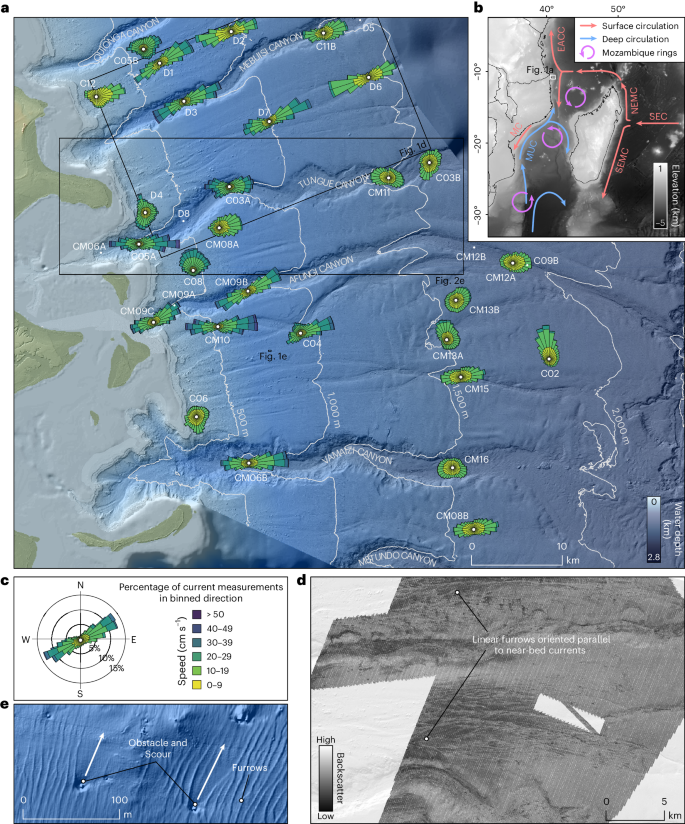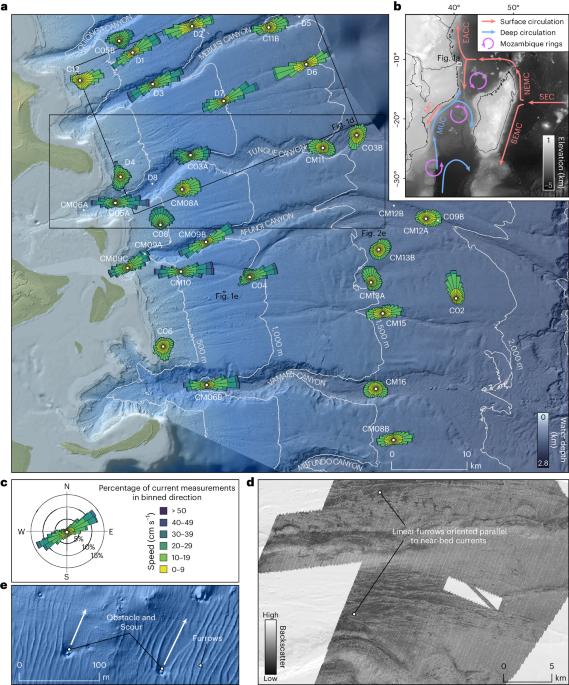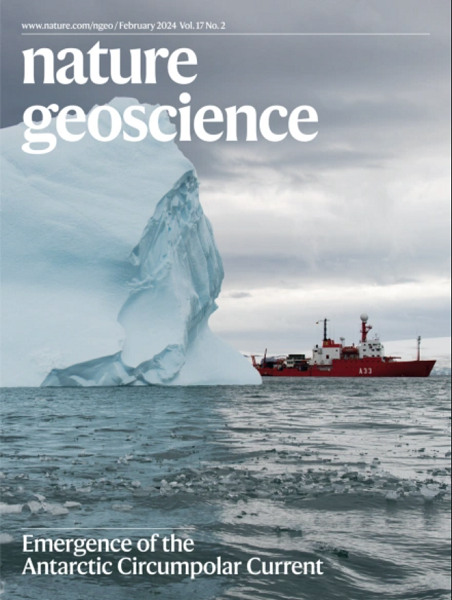Highly variable deep-sea currents over tidal and seasonal timescales
IF 15.7
1区 地球科学
Q1 GEOSCIENCES, MULTIDISCIPLINARY
引用次数: 0
Abstract
Deep-sea transport of sediment and associated matter, such as organic carbon, nutrients and pollutants, is controlled by near-bed currents. On the continental slope, these currents include episodic down-slope gravity-driven turbidity currents and more sustained thermohaline-driven along-slope contour currents. Recent advancements in deep-sea monitoring have catalysed a step change in our understanding of turbidity currents and contour currents individually. However, these processes rarely operate in isolation and the near-bed current regime is still to be quantified in a mixed system. Such measurements are crucial for understanding deep-sea particulate transport, calibrating numerical models and reconstructing palaeoflow. Here we use 4 years of observations from 34 instrument moorings in a mixed system offshore of Mozambique to show that near-bed currents are highly dynamic. We observe spatial variability in velocity over tidal and seasonal timescales, including reversals in current direction, and a strong steering and funnelling influence by local seabed morphology. The observed near-bed currents are capable of mobilizing and distributing sediments across the seabed, therefore complicating deep-sea particulate transport and reconstruction of palaeoceanographic conditions. Mooring observations suggest that deep-sea currents exhibit substantial variability over tidal and seasonal timescales, driving a complex pattern of sediment transport.


在潮汐和季节时间尺度上高度多变的深海洋流
深海沉积物及相关物质(如有机碳、营养物质和污染物)的迁移受近海底流的控制。在大陆坡上,这些海流包括偶发的下坡重力驱动浊流和更持久的沿坡热盐驱动等高线海流。深海监测的最新进展促使我们对浊流和等高线海流的认识发生了质的变化。然而,这些过程很少单独运行,在混合系统中,近海底海流机制仍有待量化。这种测量对于了解深海颗粒物输运、校准数值模式和重建古水流至关重要。在这里,我们利用莫桑比克近海混合系统中 34 个仪器锚系设备 4 年的观测结果,证明近底海流具有很强的动态性。我们观测到流速在潮汐和季节时间尺度上的空间变化,包括海流方向的逆转,以及当地海床形态的强烈转向和漏斗影响。观测到的近底层海流能够调动和分布整个海床的沉积物,因此使深海颗粒物的迁移和古海洋学条件的重建变得更加复杂。
本文章由计算机程序翻译,如有差异,请以英文原文为准。
求助全文
约1分钟内获得全文
求助全文
来源期刊

Nature Geoscience
地学-地球科学综合
CiteScore
26.70
自引率
1.60%
发文量
187
审稿时长
3.3 months
期刊介绍:
Nature Geoscience is a monthly interdisciplinary journal that gathers top-tier research spanning Earth Sciences and related fields.
The journal covers all geoscience disciplines, including fieldwork, modeling, and theoretical studies.
Topics include atmospheric science, biogeochemistry, climate science, geobiology, geochemistry, geoinformatics, remote sensing, geology, geomagnetism, paleomagnetism, geomorphology, geophysics, glaciology, hydrology, limnology, mineralogy, oceanography, paleontology, paleoclimatology, paleoceanography, petrology, planetary science, seismology, space physics, tectonics, and volcanology.
Nature Geoscience upholds its commitment to publishing significant, high-quality Earth Sciences research through fair, rapid, and rigorous peer review, overseen by a team of full-time professional editors.
 求助内容:
求助内容: 应助结果提醒方式:
应助结果提醒方式:


